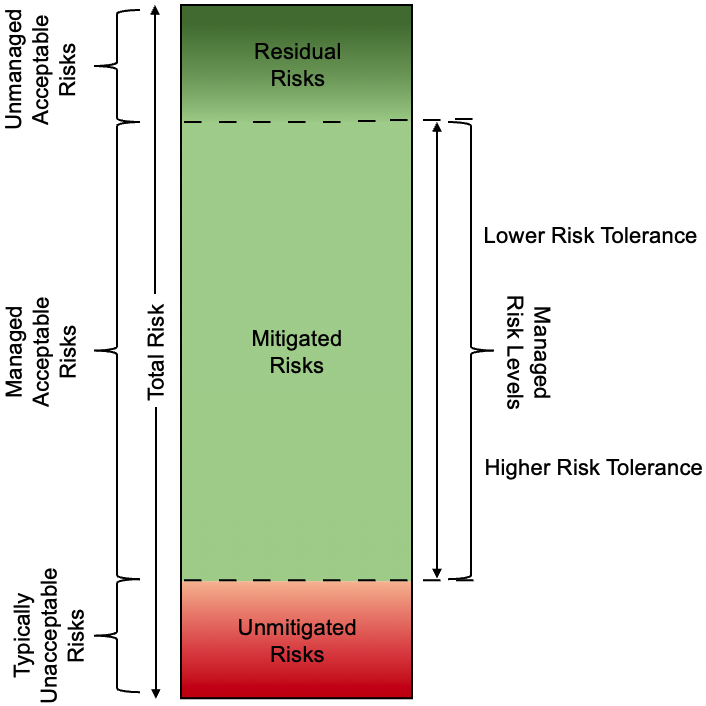Introduction
Do you know…
- …what your FEMI risk tolerance is?
- …what your management’s FEMI risk tolerance is?
- …how your FEMI risk tolerance varies depending upon potential consequences of a FEMI event?
- …if you are achieving the optimal return on investment (ROI) for inspection and FEMI risk mitigation activities for each of your higher consequence systems?
- …if your management agrees with the FEMI strategies and tactics employed for your higher risk equipment and systems?
This article is all about helping you understand the answers to these questions and how you can manage your FEMI risks by optimizing your risk mitigation strategies, with or without risk-based inspection (RBI).
Figure 1 shows the three primary sectors of FEMI risks and allows you to understand if your risk tolerance is higher or lower for each FEMI management system within your scope of work.

In the bottom sector, there are those risks that are judged to be unacceptable without some form of mitigation to bring them into the middle sector of acceptable mitigated risks. Examples of typical unacceptable risks that would fall in the bottom sector would include such things as:
- Making physical or operating changes without adequate management of change (MOC)
- Operating without an adequate FEMI program
- Continuing to operate without correcting or mitigating known, significant FEMI threats
- Continuing to operate with hazardous leaks or known defects
- Not being in compliance with requirements of industry rules/regulations
- Not staying in compliance with company FEMI programs/procedures
- Not being in compliance with requirements of applicable industry FEMI codes/standards.
This article is all about what needs to be done to stay in that middle sector of Figure 1, where we focus all our inspection and risk mitigation activities, including all of our FEMI and PSM mitigation programs to make our FEMI risks acceptable for safe, sustained operations. In the middle sector of mitigated FEMI risks, decisions are needed on the cost effectiveness of the inspection and risk mitigation actions. If the cost and effectiveness of the proposed inspection and mitigation actions are judged to be worth the ROI of budgeted funds for risk reduction, then those inspection and risk mitigation activities should be implemented, based on their priority ranking relative to all other FEMI budget items.
Site and company risk tolerance is key to where sites operate in that middle sector of Figure 1. For sites that are more risk averse, they will typically operate closer to the upper sector to minimize their FEMI risk exposure (i.e., continually reduce FEMI threats). That is especially true for systems where the exposure to higher consequence events is of concern [1]. For a variety of reasons, some sites may choose to operate closer to the bottom sector (i.e., taking on more FEMI risks than sites that are more risk averse). Those sites operating in a less risk averse manner (closer to the bottom of the middle sector) may do so out of ignorance or simply because they don’t believe the threat is likely to cause a big problem (i.e., betting that their FEMI risks are not as great as other sites believe they can be or having the attitude that “that’s never happened here before and is not likely to happen here”).

















Comments and Discussion
There are no comments yet.
Add a Comment
Please log in or register to participate in comments and discussions.